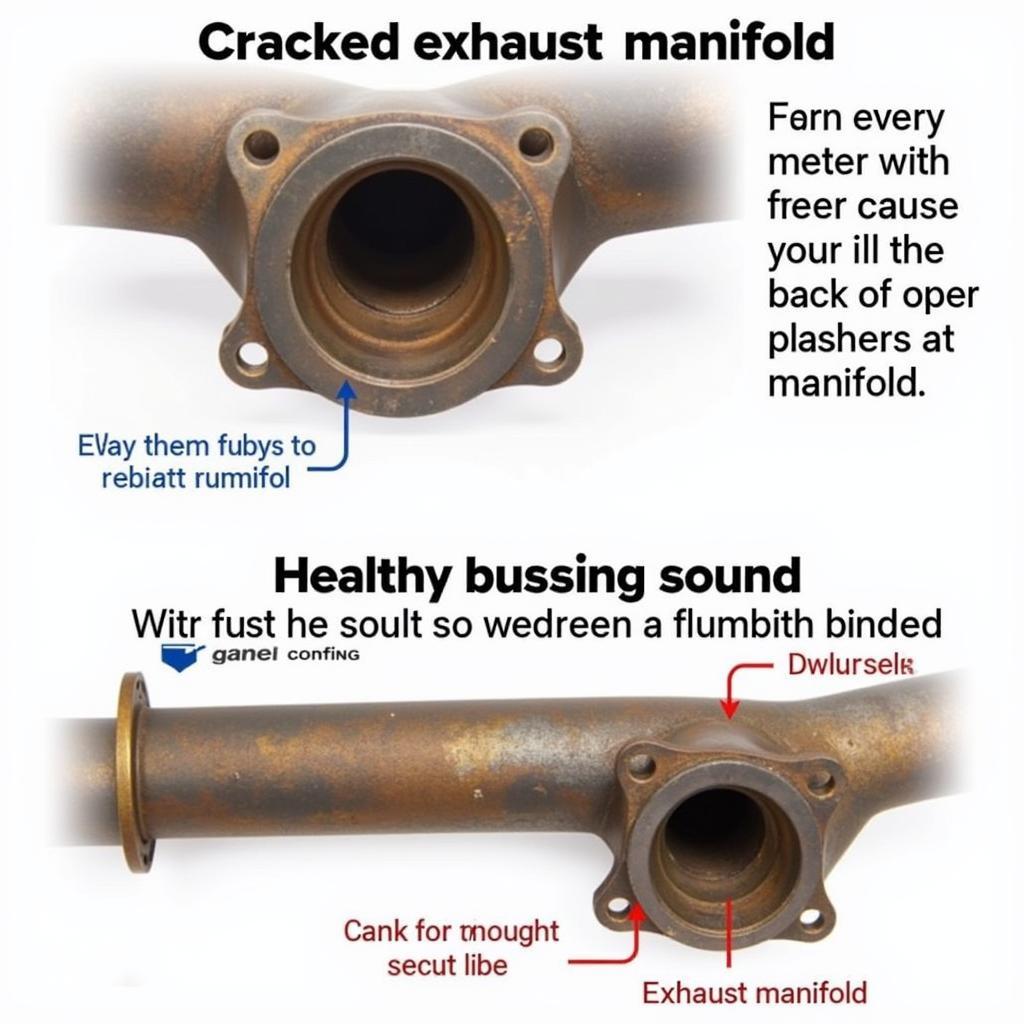Bussing Sound From Car: Your Service Note Decoded
A bussing sound emanating from your car can be unsettling. Understanding what your car service note means when it mentions a “bussing sound from car” is crucial for addressing the issue and preventing further damage. This article will delve into the common causes of this noise, how to diagnose them, and what your service note might indicate.
Decoding Your Car Service Note: Bussing Sounds
A car service note mentioning a “bussing sound” offers a starting point for diagnosis. However, it’s often a general description requiring further investigation. The note might include additional clues, such as the location of the sound (front, rear, engine compartment), the conditions under which it occurs (acceleration, braking, idling), or its frequency (constant, intermittent). These details are essential for pinpointing the problem. A thorough service note will also suggest potential causes and recommend specific inspections.
Common Causes of Bussing Sounds in Cars
Several components can create a bussing sound, ranging from minor annoyances to serious mechanical problems. Here’s a breakdown of the most common culprits:
- Exhaust System: A leak in the exhaust system can produce a bussing or humming sound. This could be due to a cracked manifold, loose exhaust pipe, or damaged muffler.
- Fuel Pump: A failing fuel pump may emit a high-pitched whine or buzz, often heard from the rear of the car.
- Power Steering Pump: A worn-out power steering pump can create a buzzing or whining noise, especially when turning the steering wheel.
- Alternator: A failing alternator can produce a variety of noises, including a buzzing or whining sound.
- Air Conditioning System: Problems with the AC compressor or other components can cause a buzzing sound, especially when the AC is running.
- Loose or Damaged Components: Loose belts, hoses, or other components can vibrate against other parts of the car, creating a buzzing or rattling sound.
 Car Exhaust System Bussing Sound
Car Exhaust System Bussing Sound
Diagnosing the Bussing Sound
Identifying the source of the bussing sound requires systematic troubleshooting. Start by carefully reviewing your car service note for any specific details. Then, try to replicate the sound under controlled conditions. Pay attention to when and where the sound occurs. Does it change with engine speed, steering input, or AC usage? This information will help narrow down the possibilities.
Using Your Service Note for Targeted Diagnosis
A good service note will often suggest specific tests or inspections. For example, it might recommend checking the exhaust system for leaks, inspecting the power steering fluid level, or testing the alternator output. Following these recommendations can save you time and effort.
 Mechanic Diagnosing Car Bussing Sound
Mechanic Diagnosing Car Bussing Sound
What to Expect During Your Car Service
Once you’ve identified the likely cause of the bussing sound, it’s time to take your car to a qualified mechanic. They will perform a thorough inspection and confirm the diagnosis. Depending on the problem, the repair might involve replacing a faulty component, tightening loose parts, or repairing a leak.
Understanding the Repair Process
Your mechanic should explain the necessary repairs and provide a cost estimate. Don’t hesitate to ask questions if anything is unclear. A reputable mechanic will be happy to explain the process in detail.
“A clear and detailed service note is invaluable for both the mechanic and the car owner,” says John Smith, Senior Automotive Technician at Smith Auto Repair. “It provides a roadmap for diagnosis and ensures everyone is on the same page.”
Conclusion: Addressing Your Car’s Bussing Sound
A bussing sound from your car shouldn’t be ignored. By understanding your service note and following the diagnostic steps outlined in this article, you can effectively address the issue and prevent further damage. Don’t delay in seeking professional help when necessary. A timely repair can save you money and ensure your car’s longevity. Remember to always consult a qualified mechanic for a proper diagnosis and repair of your “bussing sound from car” issue.
FAQ
- What does a bussing sound in a car usually indicate? It can indicate various issues, from minor problems like loose components to more serious ones like a failing fuel pump or exhaust leak.
- How can I tell where the bussing sound is coming from? Pay close attention to when the sound occurs (e.g., during acceleration, braking, or idling) and its location (front, rear, engine compartment).
- Is it safe to drive with a bussing sound? It depends on the cause. Some minor issues may not pose an immediate safety risk, while others could lead to further damage or even a breakdown.
- How much does it cost to fix a bussing sound in a car? The cost depends on the underlying problem and can range from a few dollars for a simple fix to hundreds or even thousands for more complex repairs.
- Can I fix a bussing sound myself? Some minor fixes, like tightening loose components, can be done DIY. However, it’s generally best to consult a qualified mechanic for diagnosis and repair.
- How can a car service note help with diagnosing a bussing sound? A good service note provides valuable clues, such as the sound’s location and the conditions under which it occurs, helping to narrow down the possible causes.
- What should I do if the bussing sound returns after repair? Return to the mechanic immediately. The initial repair may not have fully addressed the underlying issue.
“Ignoring a bussing sound can lead to more costly repairs down the line,” advises Maria Garcia, Certified Automotive Technician and owner of Garcia Auto Services. “Early diagnosis is key to preventing further damage.”
Need support? Contact us via WhatsApp: +1(641)206-8880, or Email: [email protected]. Our customer service team is available 24/7.

